For the first time, CAD / CAM technology was introduced to dentists in 1971, which made it possible to simplify the restoration process. However, the machines used were too bulky and difficult to operate, the scanners showed serious errors that prevented the creation of high-quality models. With the development of technology, quality indicators have gradually shifted towards digital modeling. Now the classical methodology is in second place, losing in terms of the main indicators of modern technology.
This is largely due to the increased accuracy of milling equipment, which was achieved by reducing the diameter of the milling cutters. At this level, the following systems are currently working in our country:
– Cerec;
– Organical;
– Katana and others.
Table of Contents
Key Features CAD/CAM.
CAD / CAM includes two components, namely Computer-Aided Design and Computer-Aided Manufacture. Everything happens with the use of computerized machines and scanners that help to collect information on the necessary positions of the oral cavity, handle it and translate it into finished structures. Naturally, the role of a specialist in this process is far from the last, since it is necessary to control and make improvements to the data obtained. After converting the collected information and creating a three-dimensional model, the expert analyzes and adjusts it to the specific conditions of the patient. The processed file is transferred to the machine. The most modern solutions in terms of technical equipment are able to perform tasks with a complete analysis of the quality of the structure of the materials used.
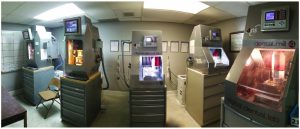 According to this principle, crowns and bridges of various scales and degrees of layout complexity, telescopic and provisional crowns, tabs and veneers, as well as abutments of dental implants are produced.
According to this principle, crowns and bridges of various scales and degrees of layout complexity, telescopic and provisional crowns, tabs and veneers, as well as abutments of dental implants are produced.
All technical systems are classified into two groups, namely closed and open. The first option is aimed at using a strictly defined consumable material, the issue of which a particular company is engaged in. Open are more promising, as they are able to use any raw materials regardless of origin and brand.
Prosthetics and CAD/CAM Materials
The process takes several stages, it is worth noting that, in comparison with the classical approach, CAD / CAM minimizes the number of model adjustments and the time spent on each stage of production. Everything goes according to the following principle:
- the specialist cleans and processes the necessary positions of the jaw to obtain detailed information;
- then data collection is carried out by creating a model, in order to obtain it, it is necessary to scan the teeth and the bite as a whole. By the way, in a similar way, you can get information from a previously made cast or use an implant analog;
- Now a special program is taken for processing, which draws a three-dimensional model taking into account all the subtleties reflected in the image. The form is selected offline, but the doctor can always make adjustments at his discretion. The procedure takes from several minutes or more, depending on the complexity of the patient’s position;
- Based on the simulation results, the data is sent to the control unit of the milling unit. As a raw material, a whole billet is used from the necessary material, from which the future tooth is cut. The process takes 10-40 minutes.
- one more step will be required if zirconium oxide is used to create the component. In this case, sintering in the furnace is necessary, due to which the model acquires the dimensions, shape, color and strength characteristics of the finished component. After firing occur, grinding and polishing the surface.
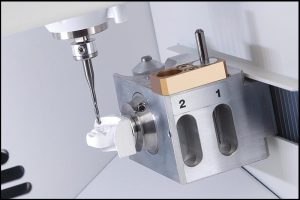 Experts are very enthusiastic about this technique, as it has several advantages over alternatives. Firstly, the time frame for constructing structures is repeatedly reduced. Secondly, in simple cases, you can restore a lost tooth in just one visit to a doctor, because now there is no need to make a cast. Thirdly, the use of medicines, in particular anesthetics, is minimized, namely, to prepare the oral cavity for the installation of the created component. Many parameters of the procedure depend on the selected material, for example, to install a solid ceramic bridge, you will need to visit a doctor twice. According to the materials used, the technology also surpasses everything previously used, since work with ceramics and composites is allowed.
Experts are very enthusiastic about this technique, as it has several advantages over alternatives. Firstly, the time frame for constructing structures is repeatedly reduced. Secondly, in simple cases, you can restore a lost tooth in just one visit to a doctor, because now there is no need to make a cast. Thirdly, the use of medicines, in particular anesthetics, is minimized, namely, to prepare the oral cavity for the installation of the created component. Many parameters of the procedure depend on the selected material, for example, to install a solid ceramic bridge, you will need to visit a doctor twice. According to the materials used, the technology also surpasses everything previously used, since work with ceramics and composites is allowed.
Experts practice the following options for creating designs in relation to the selected raw materials:
– titanium;
– wax;
– zirconium oxide;
– an alloy of cobalt and chromium;
– plastics of various types.
Ceramics is good because the raw materials can be mixed in various proportions. Such materials are perfectly compatible with the body, do not cause negative reactions and rejection, are resistant to abrasion, hypoallergenic. You can choose any color to fit into the general view of the remaining teeth. The zirconia-based frame has a minimum thickness of 0.5 mm, therefore additional manual processing is minimized. The hue is light, that`s why with age, when the gums settle, the dark contours of metal-ceramic structures will not appear at the joints with the prosthesis.
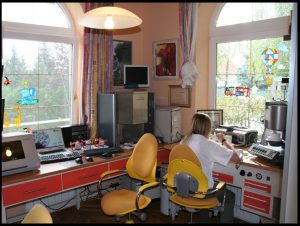
It is important to note that all products are manufactured in compliance with the standards. Numerous studies have proved that CAD / CAM can achieve a significant increase in strength in comparison with the classics, that`s why the whole system will serve much longer. The fact is that numerous lengthy adjustments in a computerized version are not required, the human factor in the production process is reduced to zero, which virtually eliminates the likelihood of error. The accuracy is higher, deviations are in the range of 15-20 microns, against 50-70 microns characteristic of casting. Over time, the structures do not deform, the gum is not injured and the component survives with a minimal discomfort.
However, this method is not without weaknesses. In particular, prosthetics can be performed not in all cases, and the decision on the prospects of work on the basis of the CAD / CAM principle is made exclusively by the attending specialist. The costs in this case will be significantly higher in comparison with the classical approach, and in some cases the result may look unnatural.
Activities CAD/CAM
Before the emergence of the innovative principle, casting was considered the best option, but there was also a soldering and stamping method, as well as sintering and superplastic molding. At all stages of the methods, the possibility of deformation, difficult to predict shrinkage, inaccuracies in fitting and similar problems that are leveled with a computer technique were not ruled out. Such problems could previously cause inaccuracies in the casting of blanks, their molding and fitting, non-compliance with the technology, such as overheating of the material.
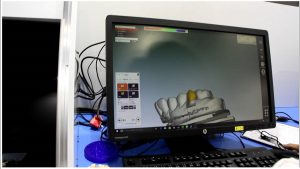 If initially CAD / CAM was implemented in dentistry due to volumetric modeling of a fixed structure, which was created by milling with an accuracy of 10 microns, now science has taken a big step forward. When implementing the methodology, expensive cutters and blocks made of carbide materials had to be used. Naturally, the cost of the method was very high, but it was slightly optimized with the introduction of volume printing techniques in the everyday life of the expert community. As part of dentistry, doctors were able to create forms with any geometry of the external and internal surfaces. At the same time, the method is currently divided into several separate areas:
If initially CAD / CAM was implemented in dentistry due to volumetric modeling of a fixed structure, which was created by milling with an accuracy of 10 microns, now science has taken a big step forward. When implementing the methodology, expensive cutters and blocks made of carbide materials had to be used. Naturally, the cost of the method was very high, but it was slightly optimized with the introduction of volume printing techniques in the everyday life of the expert community. As part of dentistry, doctors were able to create forms with any geometry of the external and internal surfaces. At the same time, the method is currently divided into several separate areas:
– wax seal;
– polymers;
– metal alloys;
– ceramics and gypsum.
The first direction involves the thermal effect, which melts the wax, the form is projected by drops. In fact, the method is considered more advanced, but requires the use of casting, which retains its drawbacks. Due to the high error when creating a casting, the accuracy of the modeling of the component practically loses its meaning.
The second direction is convenient because it allows you to create collapsible models of the whole jaw based on plastic, bearing systems made of ash-free raw materials and high-quality prostheses, including removable ones. The method is divided into two subspecies: thermal printing and light curing. The first option is good for ashless raw materials, thermoplastics, and the second for frames, crowns made of ashless raw materials, polyurethane or acrylates.
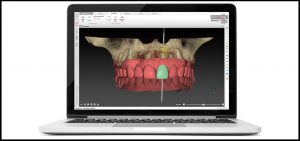 The first two methods are similar in principle to an inkjet printer, but the material is applied in three planes. Shrinkage is not observed due to the application of the composition with microscopic drops. Except for the simplest methods, which do not give high accuracy, they use the SHS (selective heat sintering) method in dentistry, which is divided into the inkjet and stereolithographic method (MJM and SLA, respectively).
The first two methods are similar in principle to an inkjet printer, but the material is applied in three planes. Shrinkage is not observed due to the application of the composition with microscopic drops. Except for the simplest methods, which do not give high accuracy, they use the SHS (selective heat sintering) method in dentistry, which is divided into the inkjet and stereolithographic method (MJM and SLA, respectively).
Light curing is interesting in that the raw material does not need to be heated, since it is initially liquid. Its hardening occurs under the influence of blue spectrum light.
Stereolithographic technology is carried out in a bath with a liquid composite in which the object is repeatedly immersed. Hardening occurs in stages, in layers, and takes as long as it takes to create a specific object. The technology is good for high accuracy, resolution, smoothness of the finished sample. However, you can work with only one color, part of the raw material is not used for the prosthesis, in the process becomes unusable, which increases the cost of production. Similarly, the price rises due to the small resource of the bath and the laser.
The third direction, that is, metal printing, involves the fusion of the prepared material at a small point, due to the beam. Several techniques:
– direct deposition with the abbreviation DMD;
– spraying using an LDT laser;
– fusion with the participation of similar LCT equipment;
– freeform production of LFMT;
– deposition using a laser beam LMD;
– fusion using an LMF laser;
– sintering of a selective format using an SLS laser;
– direct sintering of DMLS;
– selective melting of SLM;
– focusing with an LC laser;
– melting according to the electron-beam technique of the computer;
– selective sintering SHS.
Each direction is distinguished by specific features, positive and negative sides. The final choice of technique depends on the technical equipment and the situation of a particular patient.
The fourth direction involves the usage of gypsum or ceramics. According to the release technology, the technique has much common features with SLS, with the difference that the work is not carried out by a laser, but a linking component acts as a catalyst. In this form, a special glue acts, interacting with particles of material. However, in dental practice, only the principle of working with ceramics found application, and gypsum gave way to composites that surpass it in many parameters. Ceramics, in turn, is promising for the creation of frames, bridges and crowns.
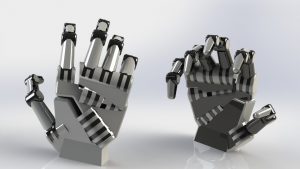
It is important to remember that not in any clinical situation an expert will be able to take advantage of volume printing when creating products. In some provisions, the best result can be obtained via using classical technology, which is not so bad due to the significant cost savings.

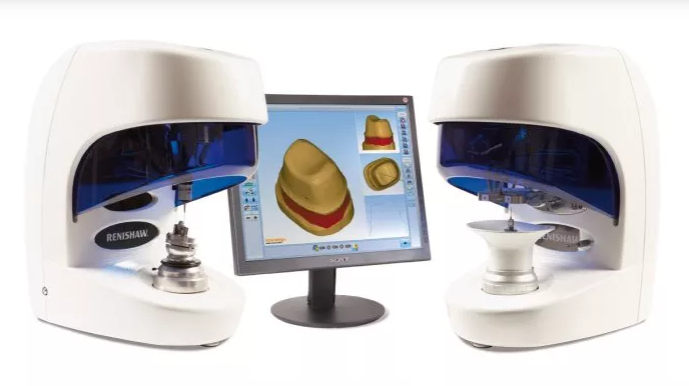
Pretty! This was a really wonderful post. Thank you
for supplying these details.
Hi there! This is my 1st comment here so I just wanted to give a quick
shout out and say I truly enjoy reading your posts.
Can you suggest any other blogs/websites/forums that
cover the same topics? Appreciate it!
Do you have any video of that? I’d love to find out some additional information.
Greetings! Very useful advice within this article! It is the little
changes that produce the biggest changes. Thanks for sharing!